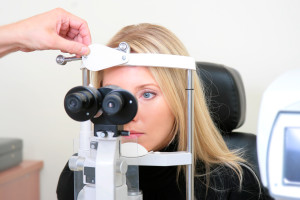Posted by: Georgia Eye Physicians and Surgeons in Latest News, Uncategorized
Technology has come to play an ever increasing role in our lives. For example, in the early 1990’s, portable phones were considered an extravagant novelty; few would have imagined that in just two decades the majority of people in the industrialized world would carry them constantly. Now, fully interactive technology like Google Glass makes it possible to literally immerse yourself in a computer-delivered display during every waking moment. However, many have questioned whether this constant exposure to digital display can have a negative effect on vision and the long term health of the eyes.

On the other hand, the most cutting edge technology is making great strides in actually improving people’s eyesight. A team from the University of California, Berkley and the Massachusetts Institute of Technology are designing digital displays that can adjust to the visual requirements of individual users, effectively correcting the image on the screen so that it can be seen clearly without the need for prescription eyeglasses or contact lenses. Such an advance could be particularly helpful to those suffering from presbyopia, an age-related eye disorder that can cause deterioration in close range vision while leaving long range vision intact.
Even more impressive is the “smart lens” technology being developed by Novartis and Google. This device incorporates tiny, non-invasive sensors into a contact lens, allowing it to monitor the surface of the eye. Currently, this can measure tear fluid in the eye and provide diabetic patients with instant information on blood glucose levels, transmitted wirelessly to a mobile device. Eventually, it is believed that the device will be able to provide vision correction to help restore the eyes natural ability to focus on near objects that may have been lost to presbyopia or macular degeneration.
If you have questions about the latest advancements in vision correction or are interested in any of the many services offered at Georgia Eye, please contact us today. Be sure to follow Dr. Segal and Dr. Lay on Facebook, Twitter, and Google+ for more tips for healthy eyes.

